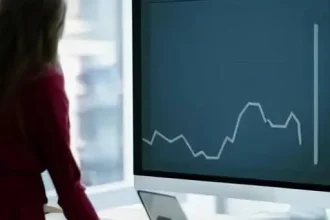In the vast, interconnected world of global finance, few markets captivate and challenge participants quite like the foreign exchange (Forex) market․ Often perceived as a whirlwind of unpredictable movements, the question of “how volatile is Forex trading?” frequently arises, sometimes with a hint of trepidation․ However, for the discerning investor and the agile trader, this inherent volatility isn’t merely a risk; it’s a profound wellspring of opportunity, a dynamic landscape where fortunes can be forged through informed decisions and strategic foresight․ Far from being an insurmountable obstacle, understanding and harnessing Forex volatility is the ultimate key to unlocking its immense potential․
Imagine navigating a vast ocean, sometimes calm and predictable, at other times lashed by powerful, profit-generating storms․ This analogy aptly describes the Forex market․ Volatility, in essence, refers to the rate and magnitude of price changes for a given currency pair over a specific period․ High volatility signifies rapid, significant fluctuations, presenting both heightened risk and amplified potential for gain․ It’s the market’s heartbeat, constantly shifting, responding to a myriad of global stimuli, and creating the very conditions that make Forex an incredibly dynamic and often lucrative arena for those equipped with the right tools and mindset․
Understanding Forex Volatility: Key Insights
| Aspect | Description |
|---|---|
| Definition of Volatility | Measures the rate and magnitude of price changes in a currency pair․ High volatility means prices can fluctuate dramatically over short periods, offering both risk and reward․ |
| Key Drivers | Economic data releases (e․g․, GDP, inflation, employment reports), central bank announcements and interest rate decisions, geopolitical events, market sentiment shifts, major news headlines, and natural disasters․ |
| Associated Risks | Rapid and significant capital loss, increased margin calls requiring additional funding, emotional trading decisions under pressure, and market gaps where prices jump without trading in between․ |
| Opportunities Presented | Potential for substantial profits in short timeframes, ability to trade effectively on breaking news events, and high liquidity allowing for quick entry and exit from positions․ |
| Mitigation Strategies | Robust risk management (e․g․, strict stop-loss orders, careful position sizing), continuous education and market analysis, fundamental and technical analysis, portfolio diversification, and utilizing demo accounts for practice․ |
| Reference | Investopedia: Forex Trading Overview |
What fuels this incredible dynamism? The Forex market, trading trillions of dollars daily, is profoundly influenced by an intricate web of global factors․ Crucially, understanding these drivers is paramount․ Economic data releases, such as Gross Domestic Product figures, inflation rates, and employment reports from major economies, often trigger immediate and powerful reactions across currency pairs․ Furthermore, central bank policy decisions, particularly those concerning interest rates, act as significant catalysts, reshaping investor sentiment and capital flows instantaneously․ Geopolitical events, ranging from elections to international conflicts, can similarly send ripples of uncertainty or confidence through the market, translating directly into pronounced volatility․ These aren’t random occurrences; they are interconnected forces, constantly shaping the contours of currency valuations․
For the astute trader, volatility isn’t something to be feared; it’s the very canvas upon which profits are painted․ When prices move significantly, opportunities for substantial gains emerge, often in surprisingly short timeframes․ Imagine catching a major trend shift fueled by an unexpected interest rate hike; the potential for rapid returns is undeniably compelling․ By integrating insights from fundamental economic analysis with sophisticated technical charting, traders can identify potential entry and exit points, capitalizing on these price swings․ This necessitates a proactive approach, constantly monitoring global news and economic calendars, allowing one to anticipate and react strategically to market-moving events rather than merely observing them․
However, navigating this high-octane environment demands discipline and a robust risk management framework․ The power of volatility, while offering immense upside, carries an equal measure of downside risk․ Unchecked, rapid price movements can lead to significant losses․ Therefore, employing stop-loss orders, meticulously managing position sizes relative to one’s capital, and never risking more than a predetermined percentage of one’s account on a single trade are not merely suggestions; they are indispensable commandments․ Education, too, plays a pivotal role․ A deep understanding of market mechanics, coupled with a commitment to continuous learning and adaptation, empowers traders to make informed decisions, transforming potential pitfalls into manageable challenges․
Looking ahead, the landscape of Forex trading is becoming increasingly sophisticated, offering even more powerful tools to manage volatility․ Artificial intelligence (AI) and machine learning algorithms are revolutionizing analysis, capable of processing vast datasets and identifying patterns that human traders might miss․ These technologies can help predict potential volatility spikes, optimize trading strategies, and even automate risk management, thereby enhancing efficiency and precision․ Expert opinions universally agree: while the inherent volatility of Forex will always be a defining characteristic, the future promises an era where advanced analytics and strategic insights will empower traders to not just survive, but truly thrive amidst the market’s dynamic fluctuations․
Ultimately, the question isn’t whether Forex trading is volatile, but rather how effectively you choose to engage with that volatility․ It’s a market that rewards preparation, knowledge, and strategic execution․ Far from being a chaotic free-for-all, it’s a realm of immense potential for those willing to learn its rhythms, respect its power, and harness its energy․ Embracing volatility, rather than shying away from it, is the mindset that will differentiate the successful traders of tomorrow, enabling them to confidently navigate the ever-shifting currents and consistently chart a course toward unprecedented financial growth․






